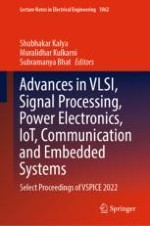This book comprises select peer-reviewed papers from the International Conference on VLSI, Signal Processing, Power Electronics, IoT, Communication, and Embedded Systems (VSPICE-2022). The book provides insights into various aspects of electronics and communication engineering as a holistic approach. The various topics covered in this book include VLSI, embedded systems, signal processing, communication, power electronics, and the Internet of Things. The contents mainly focus on the most recent innovations, trends, concerns, and practical challenges and their solutions. This book is useful for academicians, professionals, and researchers in the area of electronics and communications and electrical engineering.
